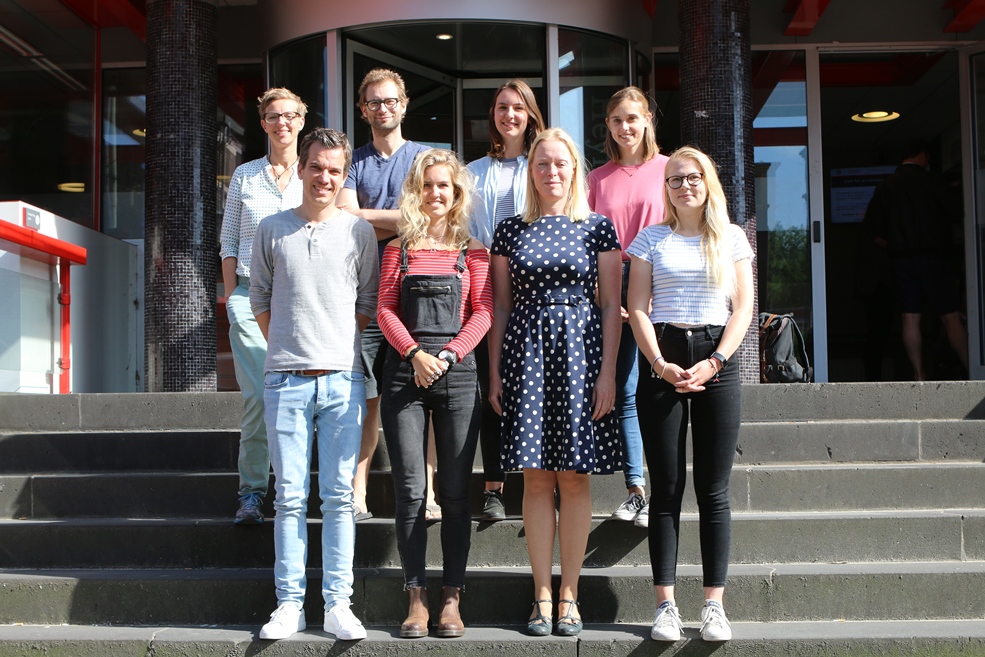
On engaging students in large courses
I am a student member of the Psychology Education Committee. One point on the Committee’s agenda this year is to record and share examples of good teaching practices. Recently, we decided to put a stronger focus on qualitative feedback of students, i.e. students’ comments and remarks, instead of only focusing on mean scores of their numerical ratings. This gives us a better idea of what exactly students like about a course.
A question that came up while we were discussing good teaching practices was, what exactly makes teaching good? We agreed that it comes down to engaging students with a topic, not only to make the lectures more enjoyable but also to make knowledge stick and encourage critical reflection. While critical thinking is encouraged throughout our program, multiple-choice exams sometimes leave little room for it. Certainly, this is a matter of capacities: Time-wise it is difficult for teachers to assess essay questions or written assignments in courses of more than 100 students…
So how can teachers engage students in large courses in spite of these restrictions? Based on students’ evaluations, in this blog post we will share several good examples that could serve as an inspiration for all teachers in the Department.
1. Using videos on YouTube / presenting out of the classroom
In his course The Social Psychology of Communication, Professor Arie Dijkstra provides short videos on his own YouTube channel, in which he explains some of the studies that are part of the course material. The main findings are discussed and strengths and flaws in the methodology are stressed. “I want students to learn how to read scientific articles, instead of just text books” Prof. Dijkstra explains to me when I ask him about his idea of good teaching. With his videos, he wants to provide some guidance for approaching these articles, and make them less intimidating. Also, he wants to reach students outside the classroom and engage them throughout the week. In the future, he would like to include small assignments throughout the week to make students apply what they learned during the lectures.
Would you, as a teacher, like to explore videos as a tool to reach students? At the Harmony building, there are multimedia rooms where you do not only find all the technical equipment but also people who can? help with making the videos.
2. Small group discussions after the main lecture
Group discussions are another way of engaging and critically evaluating what has been learned. One second-year course that actively encourages discussion is Social Environment and Behavior by Dr. Rebecca Sargisson. In addition to attending the lectures, students have the option to attend practicals in which topics are discussed in more detail. This might be especially valuable for students who are a little afraid of asking questions or engaging in discussions within large courses.
3. Work peer review / feedback
Written assignments and giving peer feedback encourage students to think more in depth about a topic. Peer feedback additionally encourages students to engage with others’ point of view and critically reflect on it. A positive example of this is the course Intergroup Relations by Dr. Yasin Koc, in which students are asked to come up with an intervention based on knowledge acquired in the course.
Another course that includes weekly assignments and peer feedback is Diagnosis and Assessment by Dr. Judith Daniels. To do this, she is using the platform Peerceptiv, which can be integrated into the Nestor environment. This may be a tool that is also worth looking into for other teachers?
4. Addressing questions submitted by students
Yet another method worth mentioning is used in the course Talent Development and Creativity by Dr. Ruud den Hartigh. The lectures are given by different guest lecturers working in the field of talent development. Prior to each lecture, students receive materials based on which they can submit questions they would like to be addressed. This way, students can actively contribute to the course topics. Since he implemented this teaching approach, Dr. den Hartigh noticed a different atmosphere in the course: There is a lot of interaction between the lecturers and the students and it is just a lot more enjoyable for both sides. “Students learn that is not as easy as in the books” he adds during our conversation. Overall, students seem to be more involved.
Dr. den Hartigh even noticed that students started forming small groups to continue discussions outside the classroom. In the upcoming year, he would like to facilitate these group discussions by making them part of the course. He is currently looking into ways to do this, and we are curious to see how the course will evolve next year.
We as the Education Committee hope that these courses can serve as an inspiration, or at least be a starting point for more ideas to improve teaching in large courses. We would like to ask all teachers and students, what do you think of these teaching methods and what does good teaching mean for you?




Good teaching is enabling students to engage in active learning. That is, enabling ALL students, not just have a minority watch optional YouTube videos, attend optional practicals, or hand in optional questions before a lecture, whilst the vast majority attends 2 out of 7 lectures and lucks through 60 multiple choice questions after having spent 3 days highlighting a summary.